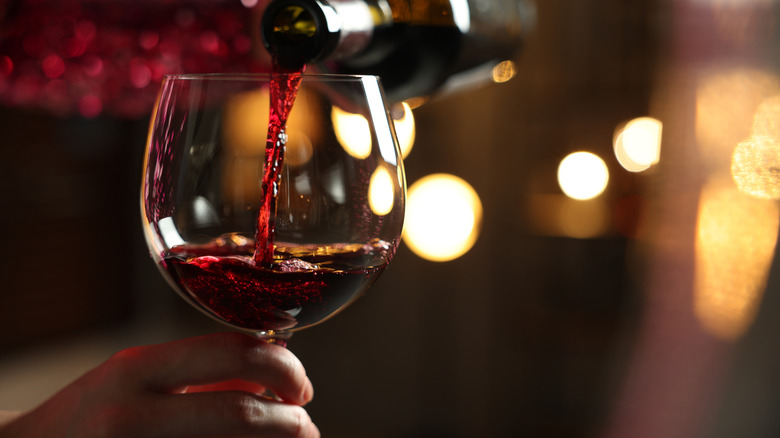Why You Should Avoid Ordering Wine By The Color
When you sit down at a bar or restaurant and receive a long list of wines, it can feel quite intimidating. There are tons of aspects to take into consideration; variety, region, tasting notes, and vintages — just to name a few. But, luckily, there are very few fast and hard rules when it comes to wine. In reality, it comes down to your palate and what flavors you enjoy — not just being a fan of how the wine looks. When it comes to ordering wine, it's best not to choose based on color because it most likely will not reflect the taste.
It might seem like the color of wine would indicate flavor, like the way orange juice is orange and cranberry juice is red. But wine color actually has very little to do with flavor. Instead, it's all about the vinification process (how the wine is made) and the grape skins. To put it simply, the longer grape skins soak in the grape juice during the winemaking process, the darker the color will be. For example, the major difference between red and white wine is that red wine involves combining the grape skins with the juice, while white wines are made by separating the skins before fermentation (the process of turning the grape juice into alcohol). Longer skin contact allows wines to develop a deeper color, but doesn't necessarily indicate if they're sweet, dry, or peppery — that comes down to tannins and other chemical compounds that affect flavor.
Things to consider before ordering
You don't have to be an expert on winemaking to make an informed decision when ordering, but there are a few factors you can take into consideration. If you're in luck and there's a sommelier to discuss options with, definitely take them up on their knowledge and ask lots of questions. Sommeliers are a great source of information on tasting notes and pairings, and can help guide you toward the right grape variety that fits your palate.
But if there isn't a sommelier in-house, there are some simple questions you can ask yourself. Do you prefer something sweet or on the dryer side? Do you want something fruit-forward or earthy? Do you typically drink dense and heavy wines like a full-bodied cabernet, or something on the lighter side like a pinot noir or pinot grigio? Do you like the taste of natural wine?
Of course, you can usually ask the bartender or sommelier for a taste of something to ensure it has the right flavor profile before making a choice. To get the most out of the sample, try swirling the glass around to open up the flavors. This releases aroma compounds that mingle with oxygen and make their way to your senses. That's the beauty of wine, it's not just about the color, label, or cost — it's an experience to be enjoyed. And whether it's red, white, or rosé, with these tips you can get the most out of your next glass.

